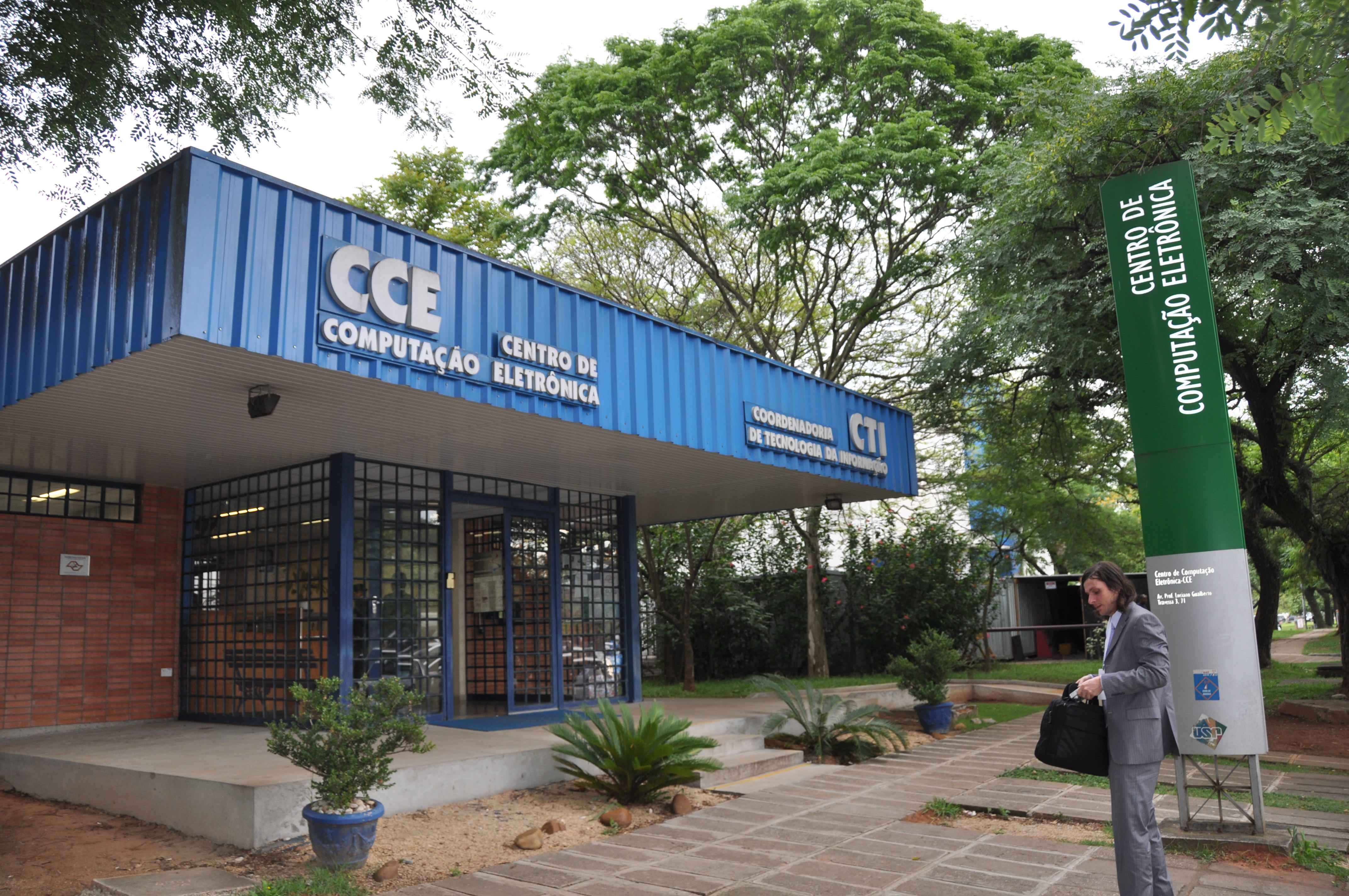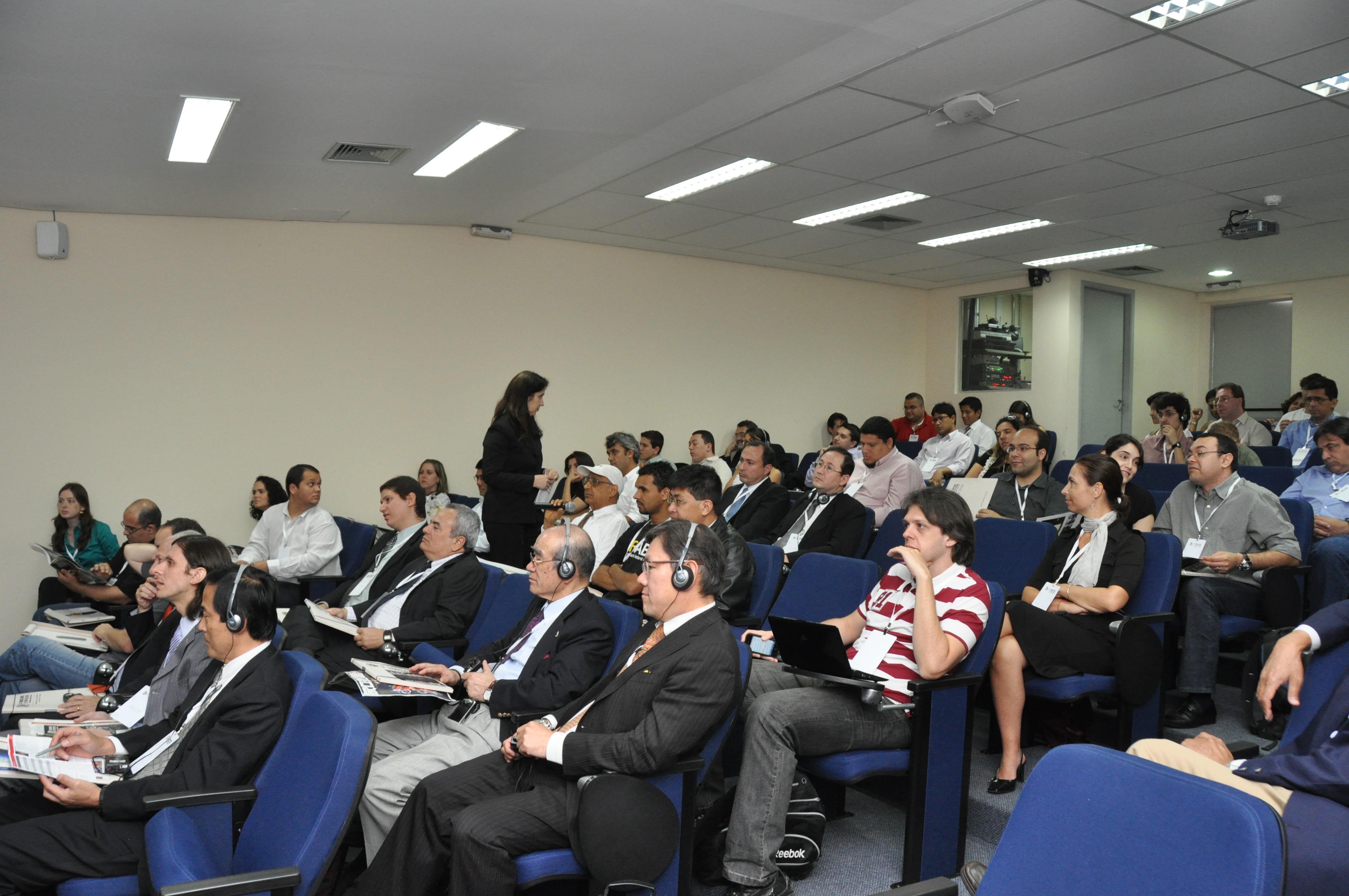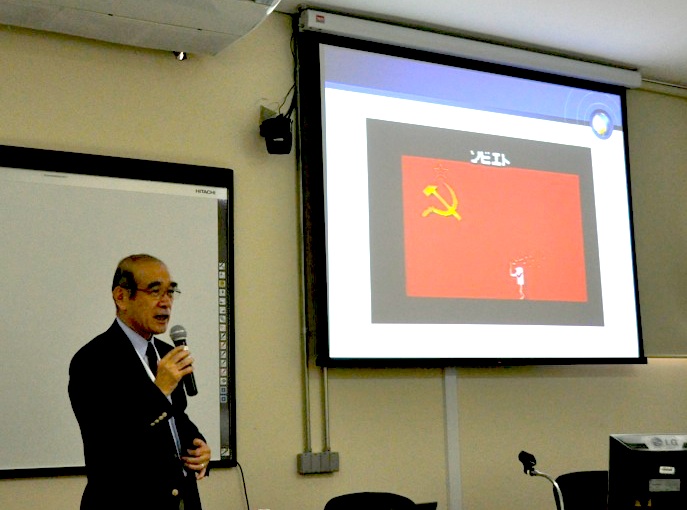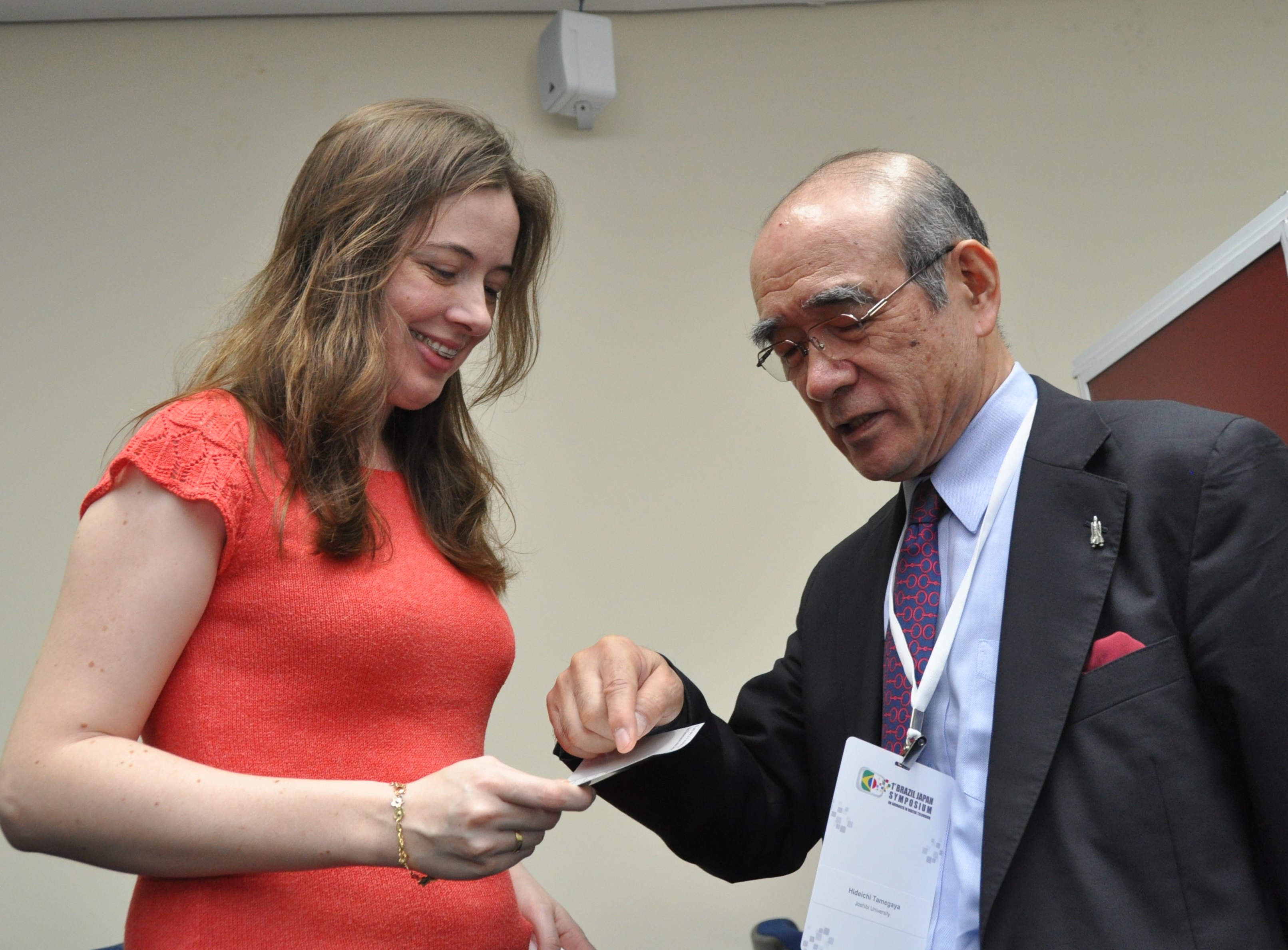Inter BEE 2011: Sao Paulo University's Dr. Marcelo Zuffo, designer of ISDB-TB, a terrestrial digital broadcasting system, to give lecture.
2011.10.27 UP
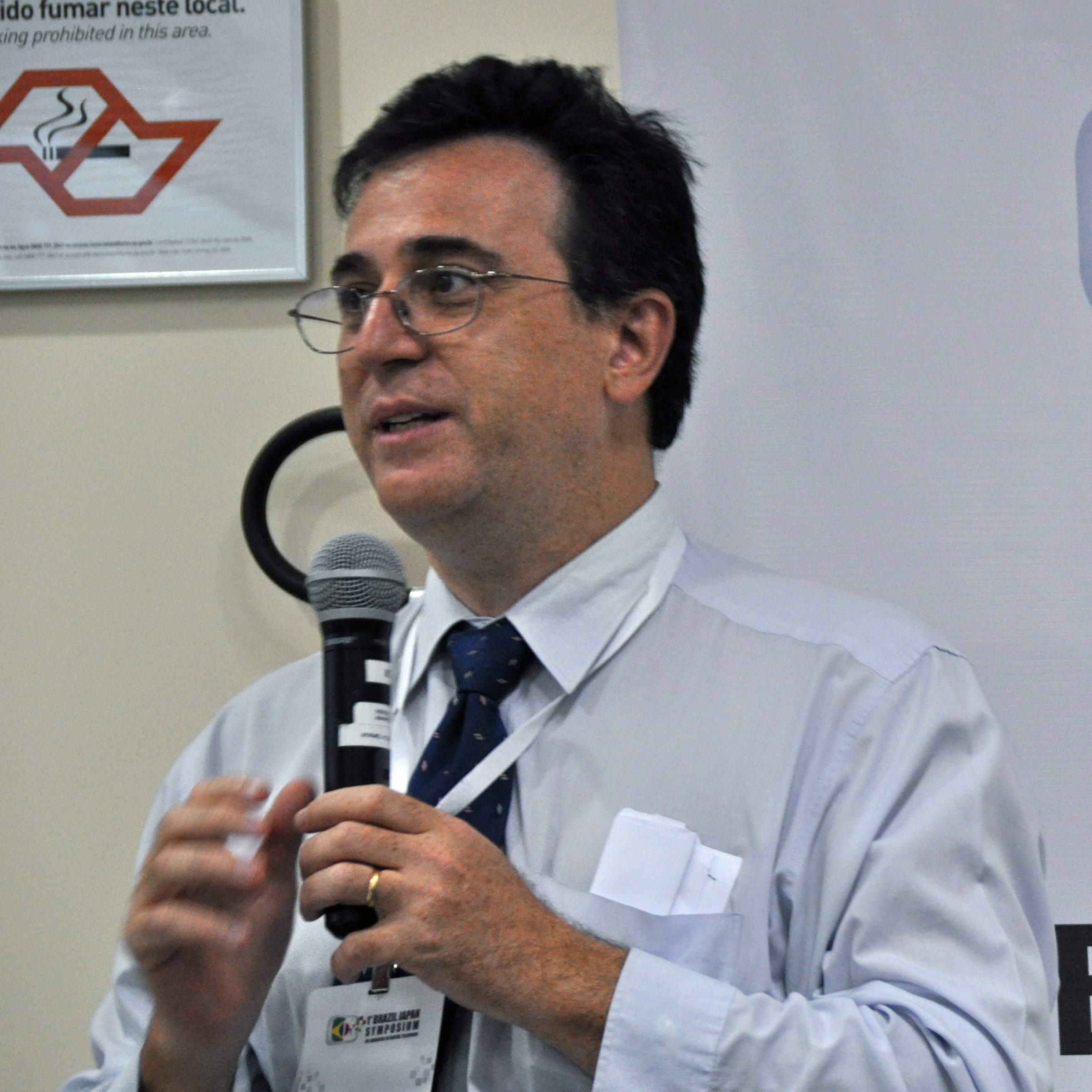
Sao Paulo University's Dr. Marcelo Zuffo and staff will be visiting Japan from Brazil to hold a lecture at Inter BEE's international conference hall on November 16 from 1 to 2:30PM. Dr. Zuffo was the key designer and implementer of Brazil's ISDB-TB format, an expansion of the Japanese terrestrial digital broadcasting format, ISDB-T.
■ Brazil's digital broadcasting representatives visit Japan and call for collaboration with the Japanese broadcasting industry
The two lectures are: "Japan and Brazil's Collaboration in the Terrestrial Digital Broadcast Arena: Our Present and Future" (speakers: Dr. Marcelo Zuffo, Sao Paulo University; Antenor Correa, IT general coordinator, Brazilian Ministry of Science and Technology) and "ISDT-TB's Background" (speaker: Laisa Caroline Costa De Biase, Sao Paulo University Polytechnic School PhD candidate).
This year's invited lecture came out of last year's "First Brazil-Japan DTV Promotion Symposium" held at the end of last year in Brazil. Interest in developing technology for next-generation digital broadcasting has been growing in Brazil, and part of that effort was realized through the above conference, which aimed to establish joint research efforts with Japan. (The event was held from December 6-8, 2010 at Sao Paulo University's Computer Electronics Center.) Six researchers from Japan gave keynote speeches and introduced the state of technology development, and seventeen Brazilian researchers gave presentations, appealing to the need for collaboration on next-generation technology.
■ "We hope to carry out joint research to develop next-gen broadcasting methods"
The First Brazil-Japan DTV Promotion Symposium was centered around Sao Paulo University's Dr. Marcelo Zuffi and his key role in the selection of the ISDB format and extension of it into ISDB-TB. Dr. Zuffo expressed his ambitions for joint collaboration, saying "By forming a partnership with Japan, we were able to introduce a fantastic broadcasting format to Brazil. We wish to expand this relationship and work closely on joint research to develop the next breed of future broadcast technologies."
The guest lecture at Inter BEE is being held in advance of the second Brazil-Japan conference (slated for the end of November), and is intended to present the current state of the conference and Brazil's future goals to the Japanese broadcasting industry and related manufacturers. The lectures aim to give a snapshot of the Brazilian broadcasting market and its future possibilities, as well as strengthen Japan and Brazil's ongoing relationship.
■ December 2010: The First Brazil-Japan DTV Promotion Symposium is held
The Federative Republic of Brazil first employed the ISDB-TB (also known as SDBTV) terrestrial digital broadcast format, itself an extension of the Japanese ISDB-T format, in 2006. Until that time, the ISDB-T format, while registered as an international standard with ITU-R (International Telecommunication Union Radiocommunications Sector), had not been adopted anywhere outside of Japan. Brazil's adoption of the format brought it to the South American continent, where it is now adopted by ten countries, in addition to the Philippines in Asia. Actual broadcasting has begun in Brazil, Peru, and Argentina, with other countries planning to follow suit in turn. 1 seg broadcasting has also begun in Brazil, where Japanese broadcast methods are blossoming.
The First Brazil-Japan DTV Promotion Symposium was centered around Sao Paulo University's Dr. Marcelo Zuffo and the key role he played in selecting the ISDB format and designing its extension, ISDB-TB. Dr. Zuffo expressed his ambitions for joint collaboration, saying "By forming a partnership with Japan, we were able to introduce a fantastic broadcasting format to Brazil. We wish to expand this relationship and work closely on joint research to develop the next breed of future broadcast technologies."
The three-day symposium, held at Sao Paulo University's Polytechnic School, featured six keynote speakers from Japan. Yoichiro Kawaguchi (Tokyo University) and Hideichi Tamegaya (Joshibi University of Art and Design) spoke about the introduction of new technology and contents. Dr. Katsuhiko Kawazoe (NTT), Dr. Gabriel Porto Villardi of NICT (National Institute of Information and Communications Technology), Yoshihiko Kuroki (Sony), and Koji Suginuma (Visual Communications Journal editorial writer) gave presentations about developing next-generation broadcast technologies.
Among the Brazilian attendees, leading researchers explained the current state of their work, discussing modulation parameters, data broadcast methods, "Project 2014K" -- a plan to broadcast the 2014 World Cup in 4K/3D, content creation, and accessibility technology for disabled users. Attendees primarily hailed from Brazil, but some visitors from Chile, Argentina, and nearby countries were also in attendance.
As one of the "BRIC" nations, Brazil is representative of countries with emergent economies. It will also be hosting the 2014 World Cup and 2016 Olympics, two massive events that will contribute to the acceleration of its economy. A key point for the 2014 World Cup is Brazil's plan to broadcast the event live over 4K/3D, organized by the country's communications research and development center, CPQD, with support from the Ministry of Science and Technology. The researchers' interest in the next step after 4K/3D technologies was markedly strong, and they passionately debated 8K and high-framerate techniques.
In between panels, devices were exhibited, with digital televisions sold in the Brazilian market and live accessibility tests of STB devices on display.
The final day of the symposium saw all attendees coming together to compose a proposal to submit to the Brazilian government. In it, they called for further joint research between Japan and Brazil and emphasized its importance for both countries' academic sector and private industry. The symposium is planned to be held regularly in the coming years.
■ Brazil adopted Japan's broadcast format in 2006
ISDB-T, the Japanese terrestrial digital broadcast format, was officially adopted by Brazil in June 2006. The country had aimed to develop its own format, but it ultimately decided to adopt Japan's. Terrestrial digital broadcasts began in December 2007, with a final phaseout of analog broadcasts set for June 2016.
Brazil's adoption of ISDB-T features the same modulation format as in Japan, a 13-segment OFDM. However, the encoding format is different, with MPEG-4 AVC/H 264 being used. In addition, there are some superficial differences: 1 seg broadcasts are set at 30 frames per second, whereas Japanese 1 seg uses 15fps. Brazil's improved version of the format is dubbed ISDB-TB or SDBTV.
Dr. Marcelo Zuffo (Sao Paulo University, Industrial arts department) was one of the committee members who worked directly on selecting a digital broadcast format for Brazil. One of the reasons he gives for choosing ISDB-T is the superiority of its modulation formula. The formats using OFDM are the European DVB-T/T2 and the Japanese ISDB-T, but above all ISDB-T's 13-segment structure was considered very flexible, and this reasoning led to its selection for Brazilian broadcasts. In addition, Zuffo noted that its robustness during transmission was another factor. South America features a rich topography that includes mountains and plains, so a high-quality transmission strength is considered extremely important.
According to the local press, over 4 million digital televisions were sold in the first half of this year. "HDTV broadcast comprises 40% of the market, and that number continues to grow," says Dr. Zuffo. The change to HD appears to be progressing rapidly.
■ Presenting 8K
At last year's "First Brazil-Japan DTV Promotion Symposium," held by Sao Paulo University, Dr. Zuffo assumed the role of chief of the executive committee. The objective of the conference was to cement the joint-research relationship between Brazil and Japan, so presentations were given by both countries' attendees explaining the state of broadcasting in their home country. The symposium covered a variety of fields, from content creation to technical development of devices.
About 120 persons attended the symposium. The majority of those attendees were researchers hailing from universities, research institutions, and private firms. Most came from Brazil, but some attendees from Chile, Argentina, and neighboring countries were in attendance. Six presenters were invited from Japan and gave keynote speeches at each respective session.
On the first day, Yoichiro Kawaguchi (Tokyo University) gave a keynote speech on CG development for 8K x 4K displays. He has been creating CG since the 1970s, and many of his past works were displayed during his talk. His work focuses on mathematical modeling, and many of the models presented were developed programmatically.
Professor Kawaguchi vividly described his experience with the displays. "When I tried displaying my artwork on 8K displays, I saw them in a completely different light," he says. The audience in turn showed a deep interest in his comments.
Professor Almir Almas (Sao Paulo University) represented Brazil and spoke about content creation. "Digital broadcasting has changed the language we use to communicate ideas," he said, adding "viewers will no longer passively react to content," suggesting the forging of new broadcaster-viewer relationships.
■ IPTV over NGN
Dr. Katsuhiko Kawazoe of NTT introduced developments in IPTV technology and advocated the spread of IPTV over next generation networks. In Japan, NTT Plala manages IPTV under the service name "Hikari TV." Dr. Kawazoe presented a multitude of services available over IPTV. Services broadcast over the airwaves require compliance with standards and must be adjusted to meet with authorization, so their rollout can be time-consuming. IPTV, however, allows for the rollout of new services comparatively quickly. The presentation highlighted how the infrastructure presents few barriers to implementing 3D and high-resolution broadcasts.
At a panel discussion after the presentation, the discussion focused on how Brazil's access infrastructure (the connection between customers and telephone companies) is developing further, and it was announced that a Chinese firm had proposed a plan for a broadband (2Mbps or more) infrastructure in 100 cities. It was also reported that "Brazil's broadcast market is third in scale after America and China," underscoring how this massive market is poised to attract new broadcast methods.
■ Monocular 3D through HFR
Yoshihiko Kuroki of Sony presented the "HFR 3D System," comprised of high framerate (HFR) technology, which records and displays images at 240 frames per second, and a camera which shoots 3D images using a monocular lens. He presented the key data forming the foundation for HFR technology, such as conclusive experiments showing that 240fps functionality allows for images that retain their quality even when heavy movement is depicted. He explained that the monocular 3D camera is based on a patent that Sony obtained in 1970; by converting that mechanism to an electronic format, they increased image quality and obtained HFR functionality. Firstly, the technique eliminates parallax at the point of focus; because the double image produced through the left and right lenses is outside of the point of focus, it allows for the display of 3D images on regular televisions without discomfort. The relationship of images was explained from an optical standpoint, and it was shown how the recorded results match this data. 3D-compatible televisions were not available for the event because they were out for demonstrations, so a Blu-Ray disc containing the footage was displayed on one channel instead.
Numerous technical questions emerged from the crowd, affirming the technical expertise of the Brazilian research field. In response to a question about whether images show improvement at 120P, the presenter responded that "You will see improvement at 120P, but the human eye can easily distinguish between 120P and 240P," suggesting that changing the frame rate to 240P would be better.
■ White space detection
Dr. Gabriel Porto Villardi of NICT (National Institute of Information and Communications Technology) gave a presentation on "cognitive radio" research. Cognitive radio is a technology that automatically detects white space and selects the optimal radio system to use in it. Dr. Porto Villardi first defined white space as "the unused frequencies in places requiring bandwidth licenses," noting that it is sometimes misunderstood as "unlicensed bandwidth."
He detailed the latest research regarding how to detect white space and enable a radio device to select the right format for that space. If white space can be properly leveraged, it will ease the strain on limited airwaves. It is believed that this technology will become essential not just in developing countries, but around the world.
■ Satellite HDTV
Hideichi Tamegaya of Joshibi University of Art and Design presented several projects he had worked on during his tenure at NHK, including the broadcaster's history of using CG and their project to embed an HDTV in a space shuttle. He spoke about the changing attitudes we have witnessed over time in the pursuit of imaging technology. He detailed how NHK's use of images has changed through the years, starting with their eight color CG images in the 1980s, such as "Dr. Holon" in 1984 (A character from the series "Warnings about the 21st Century"). His presentation also included in-production photographs of the HDTV space shuttle camera, and he touched on the numerous difficulties the project faced in broadcasting the images successfully. Professor Tamegaya stressed the importance of human beings to bridge the gap between development of technology and content creation, and emphasized that these "intermediary" roles in fact enable these projects to come to life. The presentation was well received and the audience asked many questions about teaching content creation.
■ Forging a long-term relationship
To wrap up the symposium, Dr. Zuffo and the author took the role of MCs and invited future collaboration between both countries. The response was positive, with representatives from various fields hoping for mutual cooperation. They included the industries developing the physical components of telecommunications, the infrastructural IPTV field, as well as the application sector responsible for sign language, dubbing, and interpreting services. Attendees were particularly interested in 8K, 3DTV, white space, and HFR technologies, and visitors agreed on the need for information-sharing for the planned phase-out of analog broadcasting.
The Japanese attendees suggested that November's Inter BEE would serve as a key opportunity to network with the broadcasting industry, and thus the upcoming Brazilian visit to Japan was secured.
The symposium concluded by producing a white paper on Japanese-Brazilian collaboration that Dr. Zuffo will submit to the Brazilian Ministry of Science and Technology. This year's symposium is expected to be held at the end of November.



